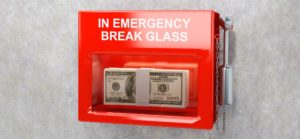
What does one do when a crisis comes like a bolt out of the blue? Some events like job loss, reduction in income, medical emergency, expenses for urgent family matters can create a big hole in one’s pocket. These expenses are totally unplanned and can come anytime. They have the potential to wipe out one’s entire savings. At times like these do you dip into your savings to tide over the situation?
The answer is No. For times like these, you should have a contingency fund to fall back on which can act as a cushion. Creating and maintaining an emergency fund is a pre-requisite before you start investing. So how do you go about creating the fund and ideally how much should be sufficient?
Contents
How much is enough?
According to experts, a contingency fund should contain 3-6 months’ worth of household expenses. So, if you are spending say Rs. 30,000 per month for your household expenses then your contingency fund should contain Rs. 90,000-Rs. 1,80,000 in it. The money allocated for the emergency fund should be easily accessible so that you do not have to wait long to get it.
Where to keep the emergency money?
For this purpose, it is important that the money is kept in a place which has high liquidity. One can invest in liquid funds or debt funds for this matter. When you need the money, you can place a withdrawal request and the money will usually be credited to your bank account within 2-3 working days. Some liquid funds also offer instant redemption facility where you can withdraw up to a certain maximum amount and the money will be immediately credited within 30 minutes. Be careful not to keep the money in your regular savings bank account. Otherwise, you will find it hard to keep yourself from spending this money that you have saved for crisis times.
Keep in mind that emergency fund is not for investment. Treat this money as sacrosanct and use it only when emergency strikes.
Maintaining the emergency fund
Creating an emergency fund is the first important step. The next step is to maintain it and refill it as soon as it is used up. Suppose if you have recently used up a major portion of your emergency fund then you should next focus on refilling it. This should take highest priority over any other investment. If required you can skip the other investments for a certain period of time till the emergency corpus is again refilled. Also, you can keep your want-based expenses to a minimum during this period so that you can save enough money to refill the corpus. Once the fund is full, you can resume your other investments and expenses.